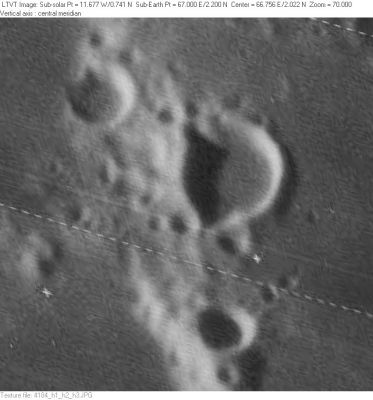Stewart
Contents
[hide]Stewart
(formerly Dubyago Q, before that Mare Spumans Q)
|
Lat: 2.17°N, Long: 66.95°E, Diam: 13.77 km, Depth: 1.09 km, Rükl: 38 |
LO-IV-184H Stewart is to the right of center. 8-km Dubyago R is to its upper left; and 7-km Dubyago N is at the bottom.
Images
LPOD Photo Gallery Lunar Orbiter Images Apollo Images
- The bright "broken ring" shaped appearance of Stewart (as it shows up during high sun illumination) is very well captured in Apollo 16's panoramic ITEK-camera frame AS16-P-5158. To detect the "broken ring" like look of Stewart, scroll all the way toward the frame's right margin, until you see the typical bright ring with the somewhat cone-shaped "spout" or "nose" at the southwestern part of its rim.
- Research: Danny Caes
Maps
(LAC zone 62C3) LAC map Geologic map LM map LTO map
Description
Wikipedia
Additional Information
- IAU page: Stewart
- Depth data from Kurt Fisher database
- Westfall, 2000: 1.09 km
Nomenclature
- Named for John Quincy Stewart (1894-1972), an American astrophysicist. Along with Russell and Dugan he was author of an influential textbook.
- This crater was known as Mare Spumans Q in Named Lunar Formations (1935).
- The name was changed to Dubyago Q in the System of Lunar Craters.
- Stewart, as a replacement name for a formerly lettered crater, first appeared on LTO-62C3. The name was approved in 1976 (IAU Transactions XVIB), although misspelled in the citation as Steward. - JimMosher
LPOD Articles
Bibliography
- Hill, Harold. 1991. A Portfolio of Lunar Drawings, page 25 (Mare Spumans).
Named Featues -- Prev: Stevinus -- Next: Stiborius
